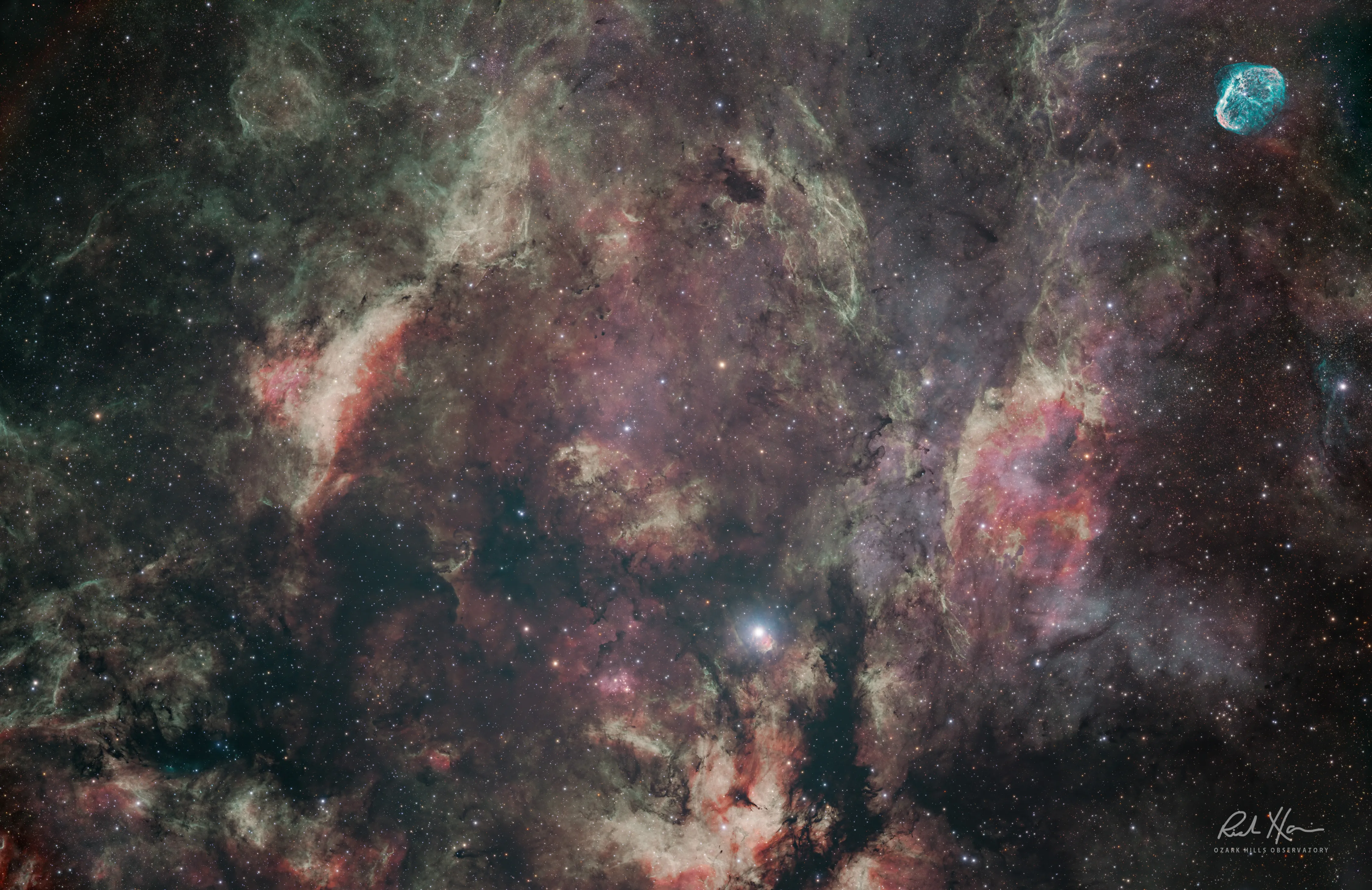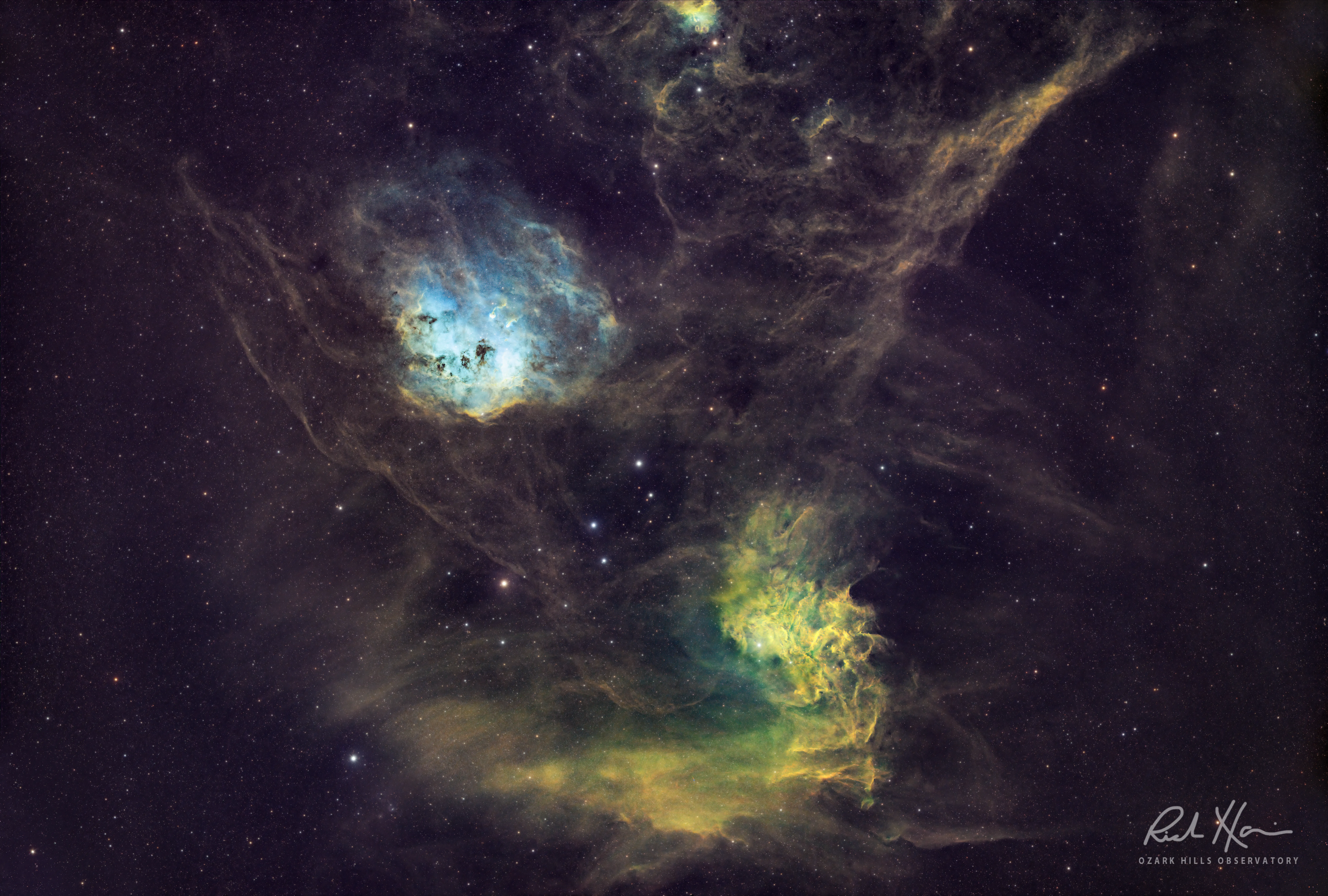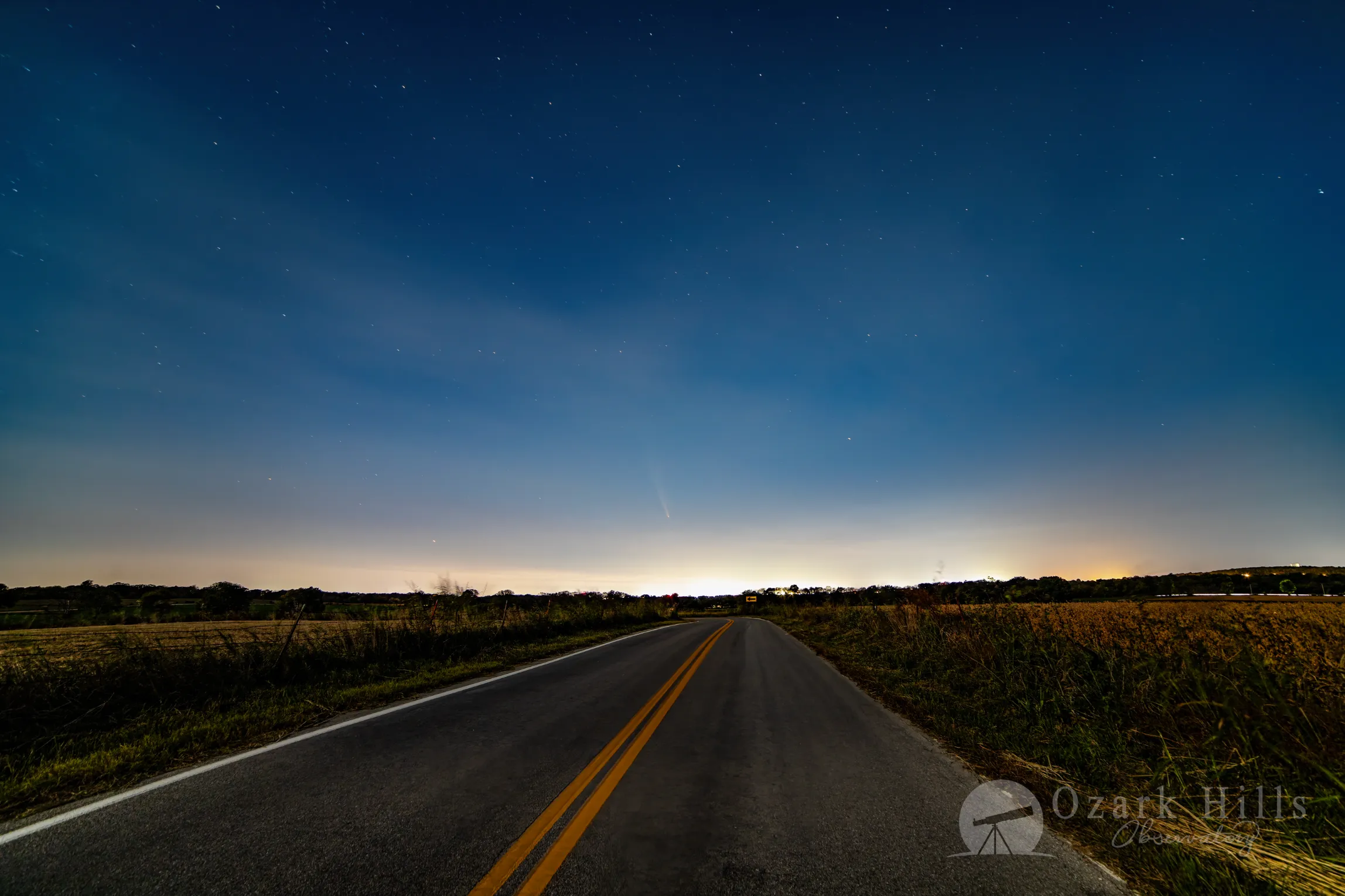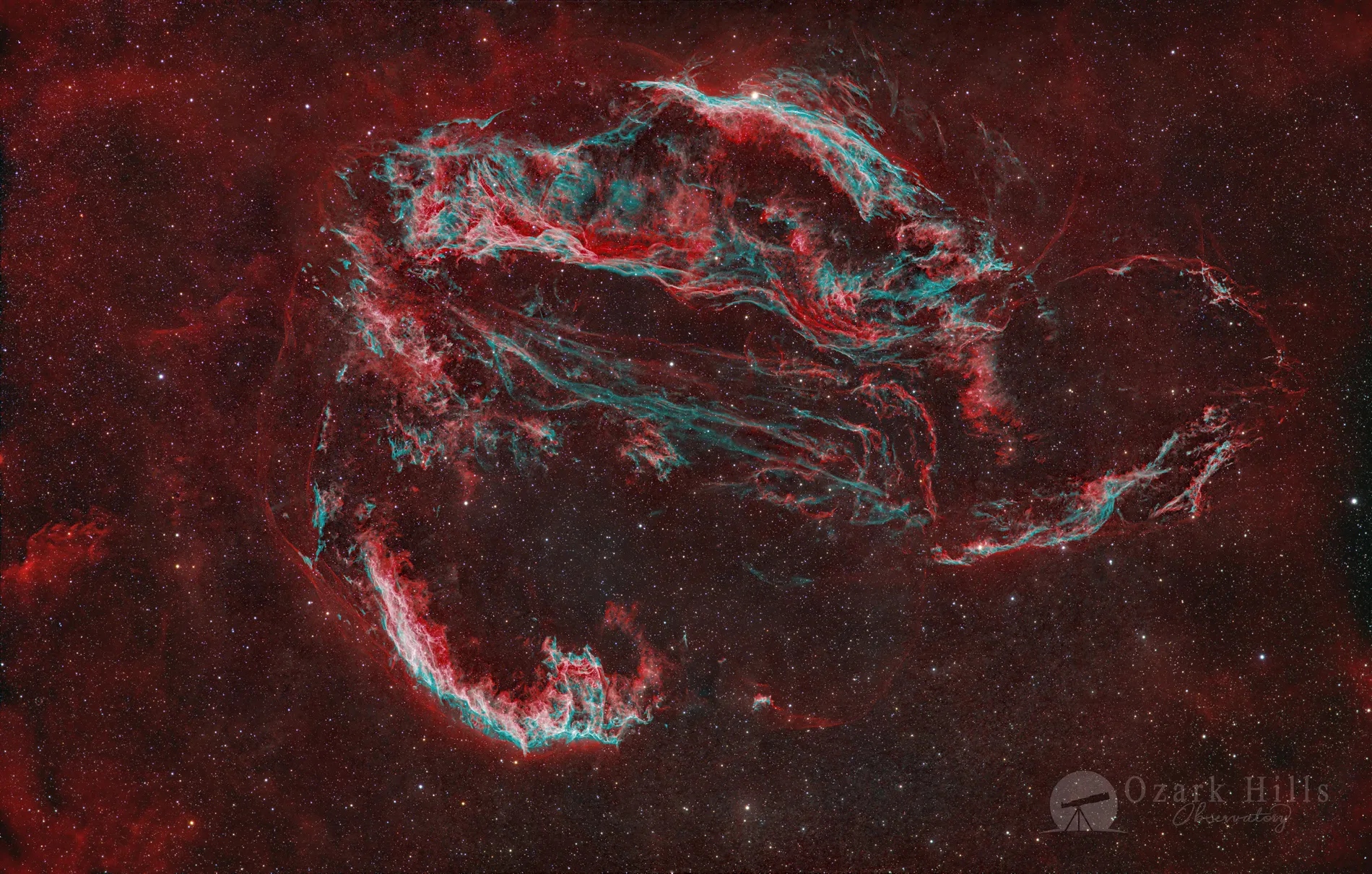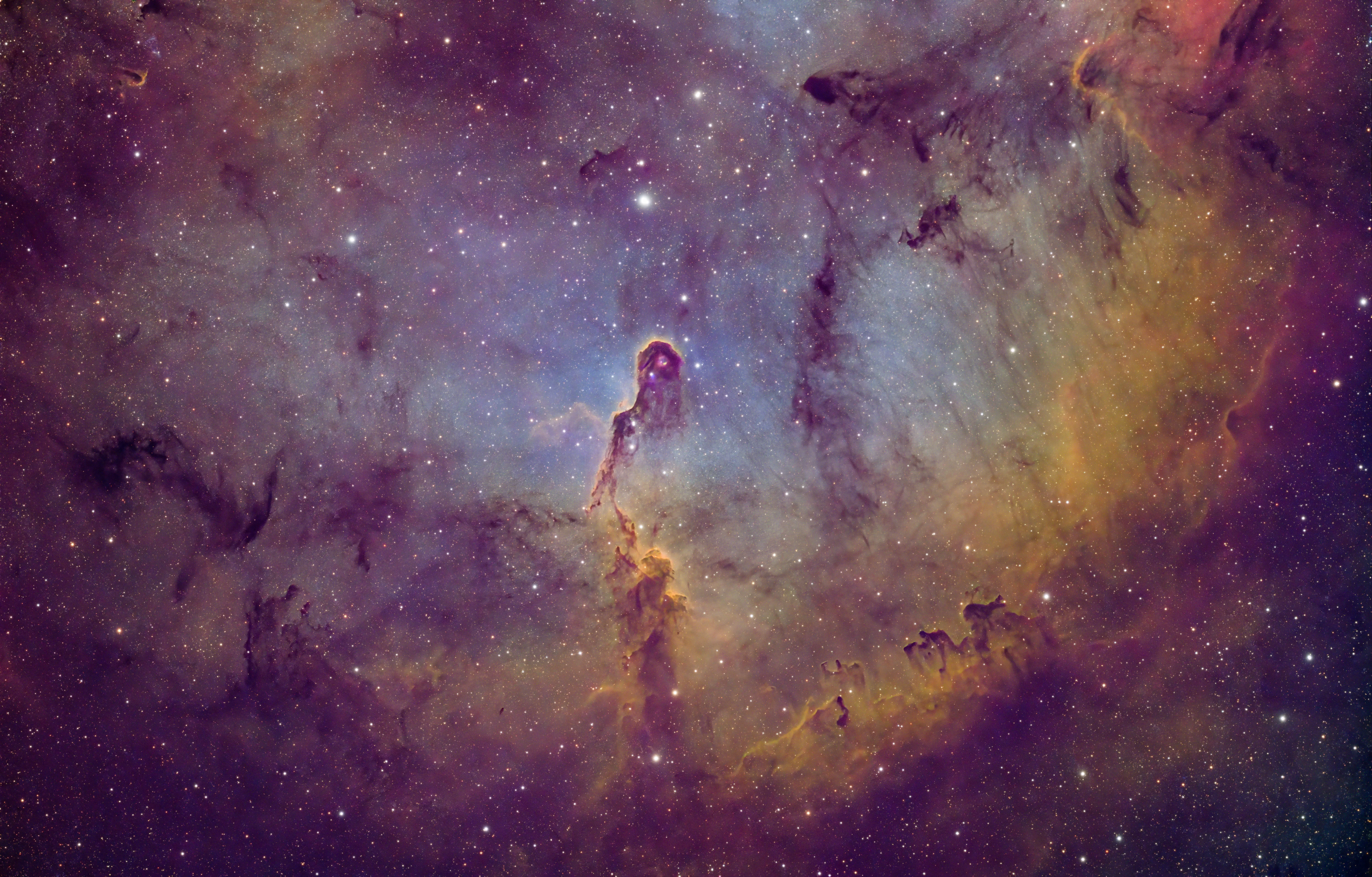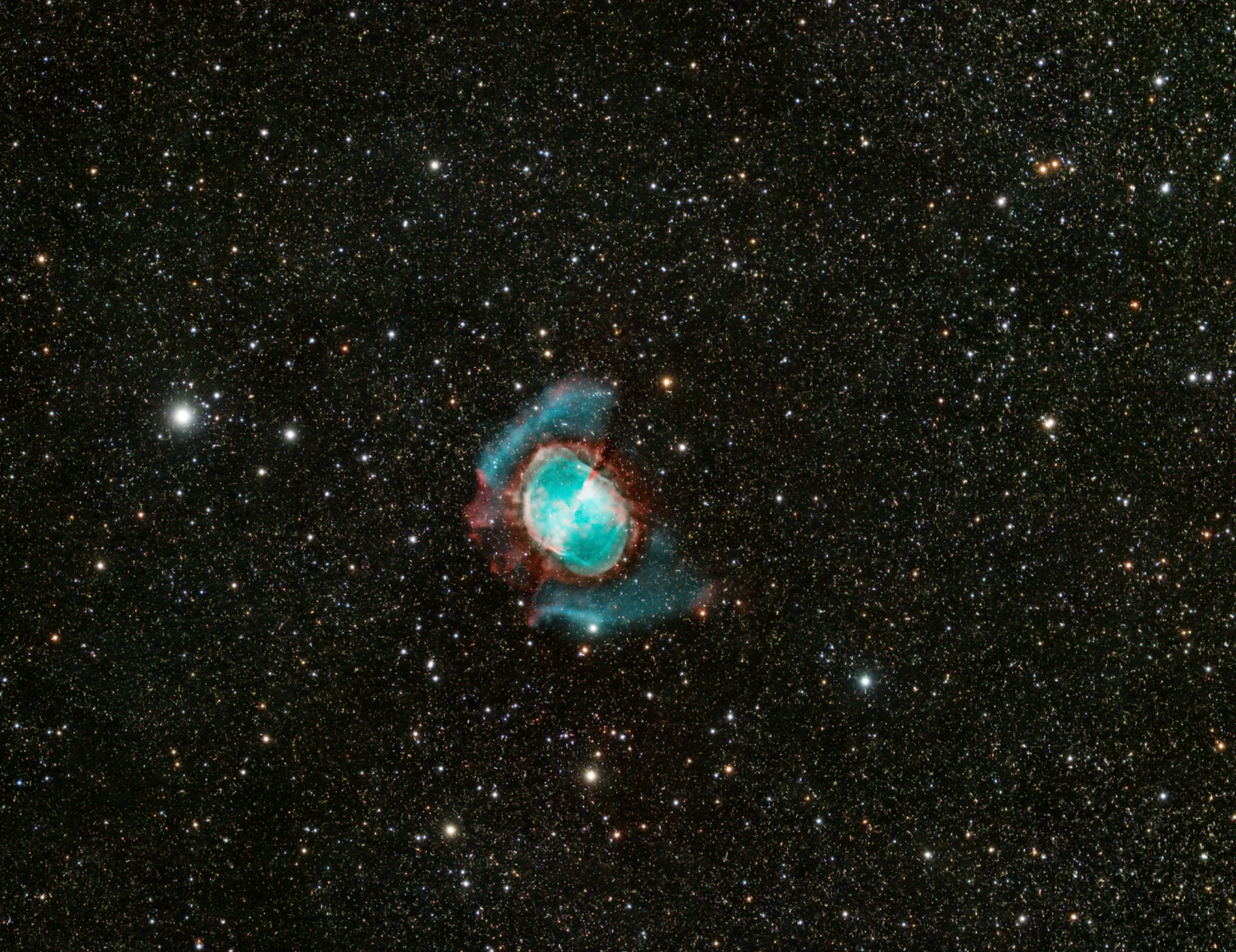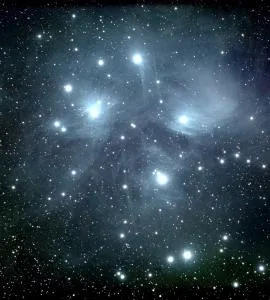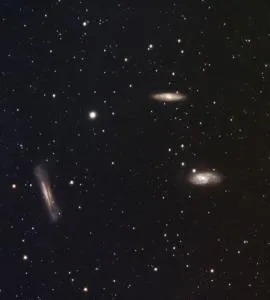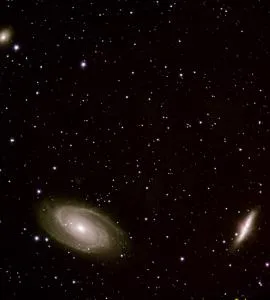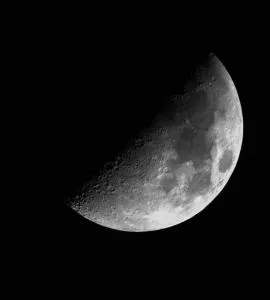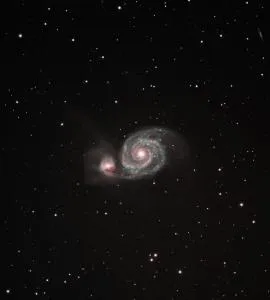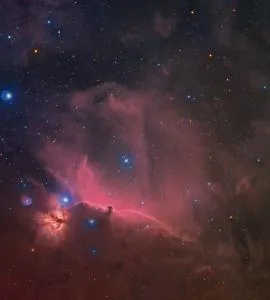Orion Nebula 2024
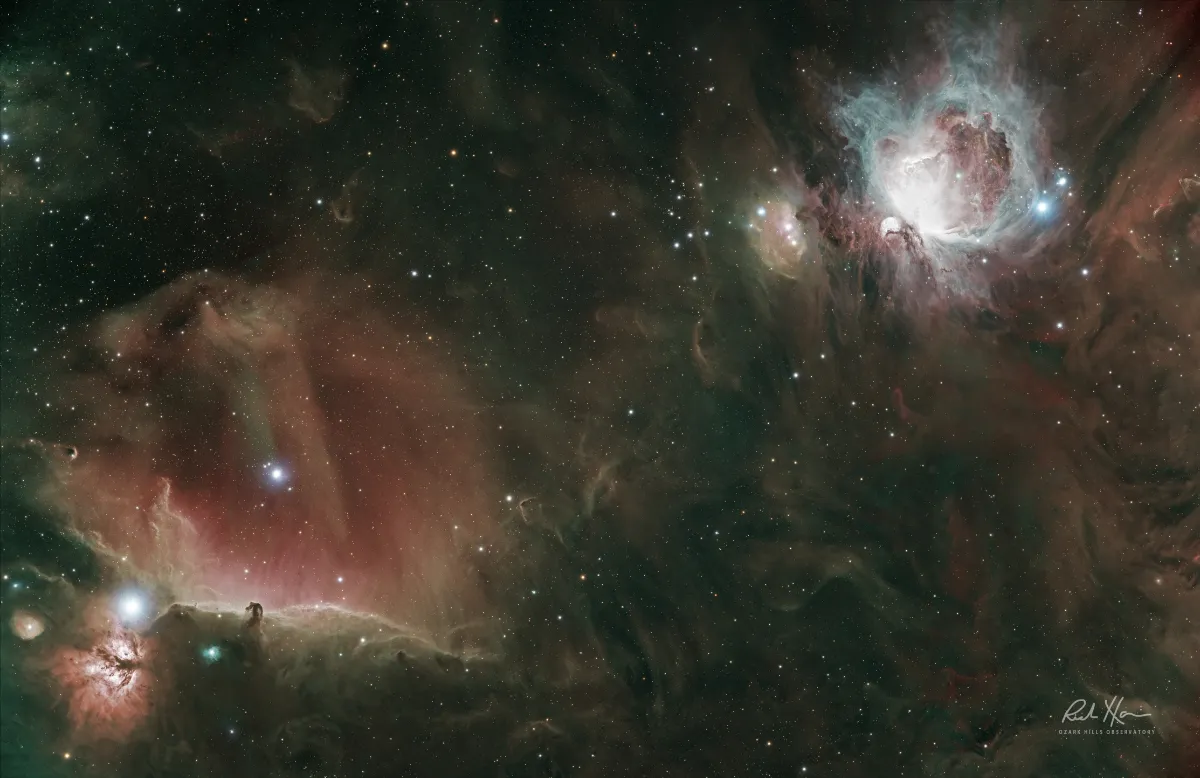
We return to the Orion region after 2 years to uncover new details using our latest gear, the Takahashi FSQ-106 EDX4, a 6200MM camera, and 3nm Chroma filters. This setup promises to reveal even more breathtaking features than my 2022 attempt.
The Orion Nebula, also known as Messier 42, is one of the most iconic and well-studied objects in the night sky. Located in the constellation of Orion, this stellar nursery is a hotbed of star formation, with over 700 young stars embedded within its glowing gas and dust clouds. It has captivated astronomers and stargazers alike for centuries, and it continues to amaze us with its beauty and complexity.
Recently, I had the opportunity to revisit this stunning celestial object using new equipment, including the Takahashi FSQ-106EDX4 telescope and Chroma 3nm filters. As an avid astrophotographer, I was excited to see how these new tools would enhance my images of the Orion Nebula.
The Takahashi FSQ-106EDX4 is a high-quality apochromatic refractor telescope, known for its sharp and clear images. Its 106mm aperture and 530mm focal length make it a perfect choice for capturing detailed views of deep sky objects like the Orion Nebula. Paired with the Chroma 3nm filters, which are designed specifically for astrophotography, this setup promised to deliver stunning results.
But as any experienced astrophotographer knows, having top-of-the-line equipment is only half the battle. The other half lies in the processing of the data captured by the telescope and filters. And this is where I paid careful attention to not oversaturate or over process the photo, as seen in so many other photos of this region.
Why Orion is challenging to photograph properly
The Orion Nebula is a challenging object to photograph, as it contains a wide range of brightness levels. The central region, known as the Trapezium Cluster, is extremely bright, while the surrounding gas and dust clouds are much dimmer. This stark contrast can be difficult to capture without losing detail in either the bright or dim areas.
To overcome this challenge, I used a technique called narrowband imaging. This involves using specialized filters, like the Chroma 3nm filters, to isolate specific wavelengths of light emitted by the nebula. In this case, I used filters that isolate the light emitted by hydrogen, oxygen, and sulfur, which are the main elements present in the Orion Nebula.
By combining the data captured through these filters, I was able to create a final image that shows the intricate details and structures of the nebula, without losing any of the fainter features. The result is a stunning and dynamic image that truly captures the beauty of this cosmic wonder.
But the key to achieving this result was in the processing of the data. I took great care to not oversaturate the image, which can often happen when processing astrophotos. Oversaturation can make the image look unnatural and can wash out details, making the final result less impressive.
I also made sure not to over-process the photo, which can lead to a loss of detail and a grainy appearance. Instead, I used a combination of techniques, such as layering and masking, to bring out the subtle features of the nebula while maintaining a natural and balanced look.
The end result is an image that I am proud of, one that accurately represents the beauty and complexity of the Orion Nebula. And I believe that the use of the Takahashi FSQ-106EDX4 telescope and Chroma 3nm filters played a crucial role in achieving this result.
Below is the Sulfur II 3nm band data we captured. As you can see, this is where the majority of the signal is concentrated.
The Sulfur II (SII) data in astrophotography represents the emission from ionized sulfur atoms in nebulae, typically captured in the deep red part of the spectrum (around 672 nm). In the Orion Nebula, SII highlights regions of low-energy ionized gas, often found in zones where star formation is less intense compared to hydrogen-rich areas. This data, when combined with H-alpha and OIII, provides a more complete picture of the nebula's composition and structure, showcasing the dynamic interplay of elements within the cosmic landscape.
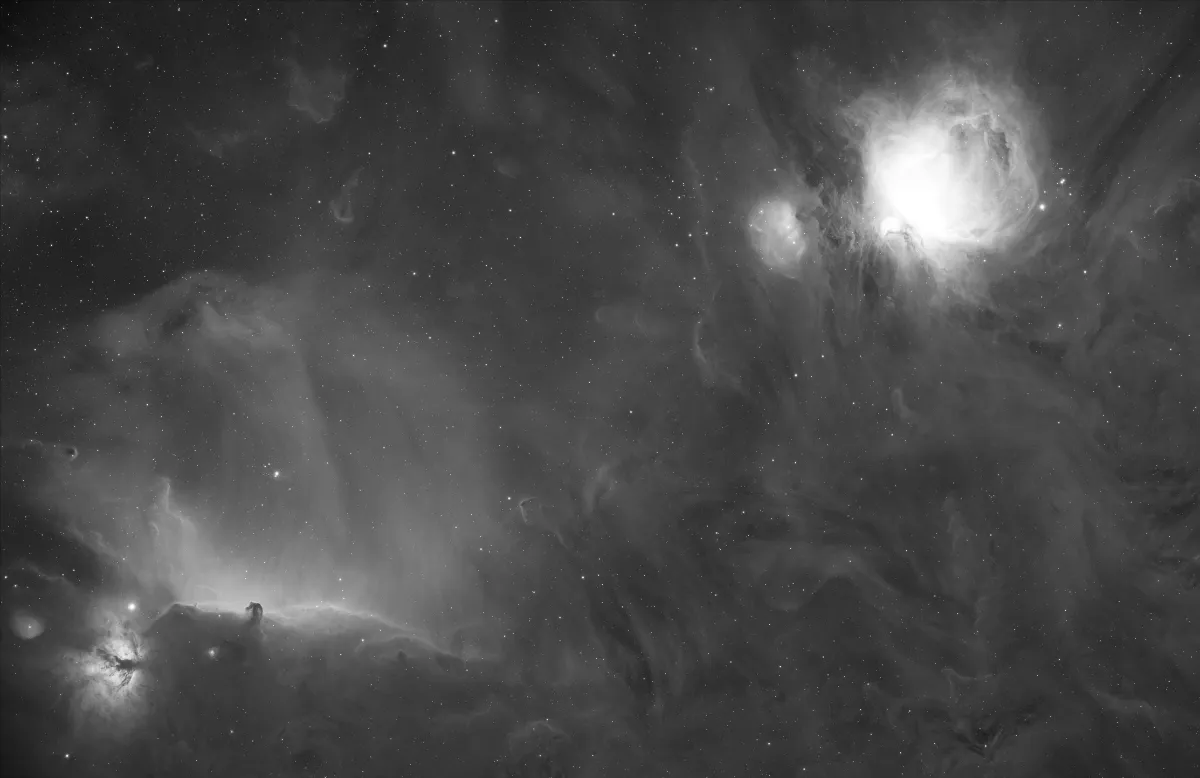
The Orion Nebula itself is below - zoomed in from the widefield main iamge. It's also known as Messier 42 or M42, is one of the most iconic and well-studied objects in the night sky. Located in the constellation of Orion, it is a massive cloud of gas and dust, spanning over 24 light-years across. This stunning celestial object has captured the imagination of astronomers and stargazers alike for centuries, and with the advancement of technology, we are now able to zoom in and see the intricate details of this cosmic wonder in its natural colors.
The Orion Nebula is a stellar nursery, where new stars are born they say, (though we've never actually witnessed this) from the dense clouds of gas and dust. It is estimated that there are over 700 stars in the nebula, with the most massive one being the famous Trapezium Cluster. This cluster of four bright stars is responsible for illuminating the nebula and giving it its distinctive shape.
When we zoom in on the Orion Nebula, we can see the intricate details of the gas and dust clouds that make up this cosmic masterpiece. The colors that we see are not just for aesthetic purposes, but they also tell us about the composition and temperature of the nebula.
The red and orange hues in the image represent the presence of hydrogen gas, which is the most abundant element in the universe. The blue and green colors, on the other hand, indicate the presence of oxygen and sulfur, which are also essential elements for the formation of stars.
One of the most striking features of the Orion Nebula is the dark lanes and pillars of dust that can be seen in the image. These structures are known as Bok globules and are believed to be the birthplace of new stars. As the gas and dust in these globules collapse under their own gravity, they heat up and eventually form new stars.
Zooming in even further, we can see the intricate details of the Trapezium Cluster. The four bright stars are surrounded by a disk of gas and dust, which is known as a protoplanetary disk. These disks are the building blocks of planets, and it is believed that the planets in our own solar system formed from similar disks around our sun.
The natural colors of the Orion Nebula also reveal the different stages of star formation. The bright blue stars in the image are young, hot stars that have recently formed, while the red and orange stars are older and cooler. This color variation is due to the different temperatures of the stars, with hotter stars emitting more blue light and cooler stars emitting more red light.
The zoomed-in image of the Orion Nebula also shows the intricate network of filaments and tendrils of gas and dust. These structures are created by the powerful winds and radiation from the young stars, which shape and sculpt the surrounding material.
Studying the Orion Nebula in its natural colors has provided astronomers with valuable insights into the processes of star formation and the evolution of our universe. It is a constant source of wonder and amazement, reminding us of the vastness and beauty of our universe.
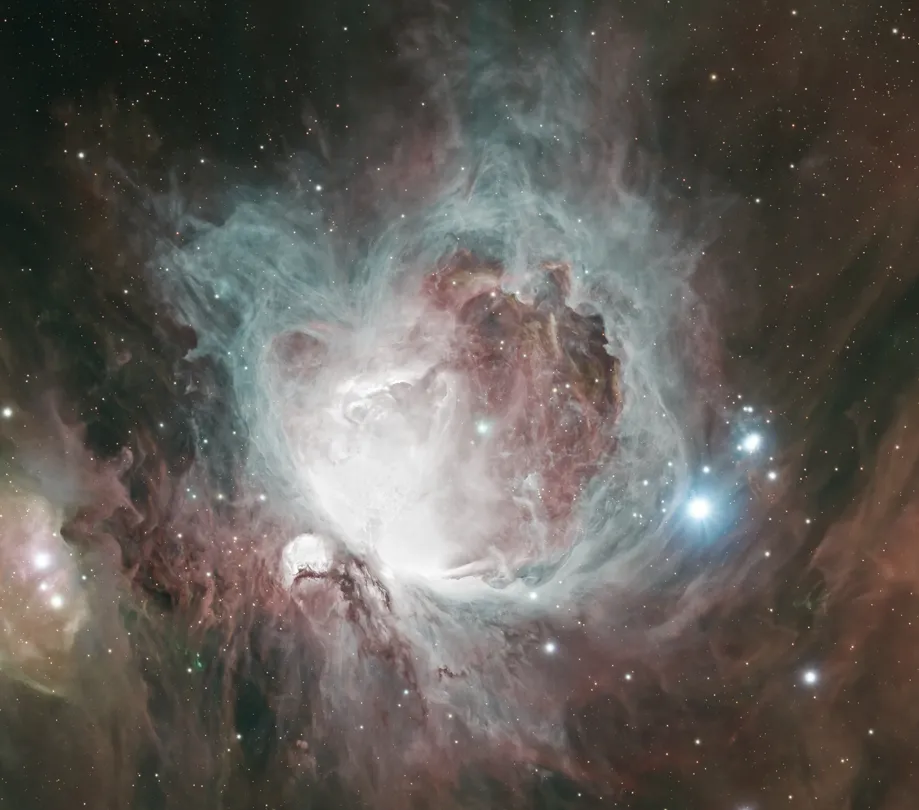
The Horsehead and Flame Nebula region is another iconic and captivating sights in the night sky. Located in the constellation Orion, this area is a hotbed of stellar activity and a favorite among amateur and professional astronomers alike. With its intricate details and stunning colors, the Horsehead and Flame Nebula region is a prime example of the beauty and complexity of our universe.
The Horsehead Nebula, also known as Barnard 33, is a dark nebula that appears to resemble the head of a horse. It is located just south of the star Alnitak, which is the easternmost star in Orion's belt. The Horsehead Nebula is a dense cloud of gas and dust that blocks the light from the background stars, creating its distinctive shape. It is estimated to be about 1,500 light-years away from Earth and spans approximately 3 light-years in size.
The Flame Nebula, also known as NGC 2024, is a bright emission nebula that is located just to the east of the Horsehead Nebula. It is illuminated by the star Alnitak and is believed to be a part of the same molecular cloud as the Horsehead Nebula. The Flame Nebula gets its name from its fiery appearance, which is caused by the ionization of hydrogen gas by the nearby star. It is estimated to be about 1,400 light-years away from Earth and spans approximately 5 light-years in size.
Together, the Horsehead and Flame Nebulae create a stunning and dynamic region in the night sky. The contrast between the dark Horsehead Nebula and the bright Flame Nebula makes for a striking visual. The intricate details of the Horsehead Nebula, such as its mane and nostrils, can be seen in high-resolution images, while the glowing gas and dust of the Flame Nebula add a pop of color to the scene.
The Horsehead and Flame Nebula region is a prime target for astrophotographers and amateur astronomers. With the right equipment and techniques, it is possible to capture the intricate details and vibrant colors of this region. However, it is not an easy feat, as the Horsehead Nebula is notoriously difficult to observe due to its low surface brightness. It requires dark skies and a large telescope to be able to see it clearly.
In addition to its aesthetic appeal, the Horsehead and Flame Nebula region also holds scientific significance. The molecular cloud that these nebulae are a part of is a site of active star formation. The intense radiation from the nearby stars is causing the gas and dust in the cloud to collapse and form new stars. This process can be seen in action in the Horsehead and Flame Nebulae, making it a valuable area for studying the birth of stars.
The Horsehead and Flame Nebula region also hold a special place in popular culture. It has been featured in numerous science fiction movies and TV shows, often depicted as a mysterious and otherworldly location. Its striking appearance and location in the constellation Orion, which is visible in the northern hemisphere during the winter months, make it a popular subject for stargazers and photographers.
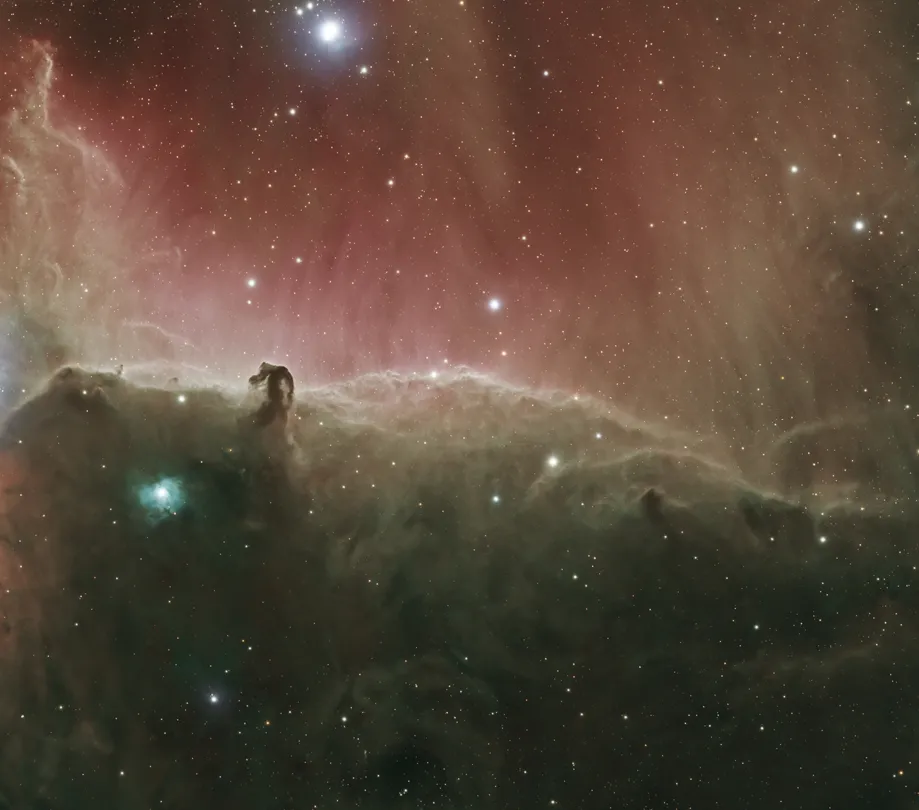
Orion Nebula, Horsehead Nebula, and Flame Nebula acquisition details
Astrophotographer: Richard Harris
Date: December 6th-7th, 2024
Location: Strafford, Missouri USA
Telescope: Takahashi FSQ-106EDX4 with 0.7X 645 Reducer (380 mm)
Mount: ZWO AM5 harmonic drive
Camera: ZWO 6200 MM (monochrome), Temp= -20, Gain= 300 / Chroma RGB + SHO 3nm filters
Guide Scope: Williams Optics 50mm
Guider: ZWO ASI 120 mini
Controller: ZWO ASI Air
Narrowband Acquisition:
Sulfer II: 10 frames at 60 each = 10 minutes, 20 frames at 300 seconds = 1.6 hours
Hydrogen Alpha: 10 frames at 60 each = 10 minutes, 20 frames at 300 seconds = 1.6 hours
Oxygen III: 10 frames at 60 each = 10 minutes, 20 frames at 300 seconds = 1.6 hours
Red: 5 frames at 180s each = 15 minutes
Blue: 5 frames at 180s each = 15 minutes
Green: 5 frames at 180s each = 15 minutes
Total acquisition time = 6 hours
Darks/Flats/Bias: (None)
Processing: Pixinsight, Photoshop
Bortle Class Sky: 4
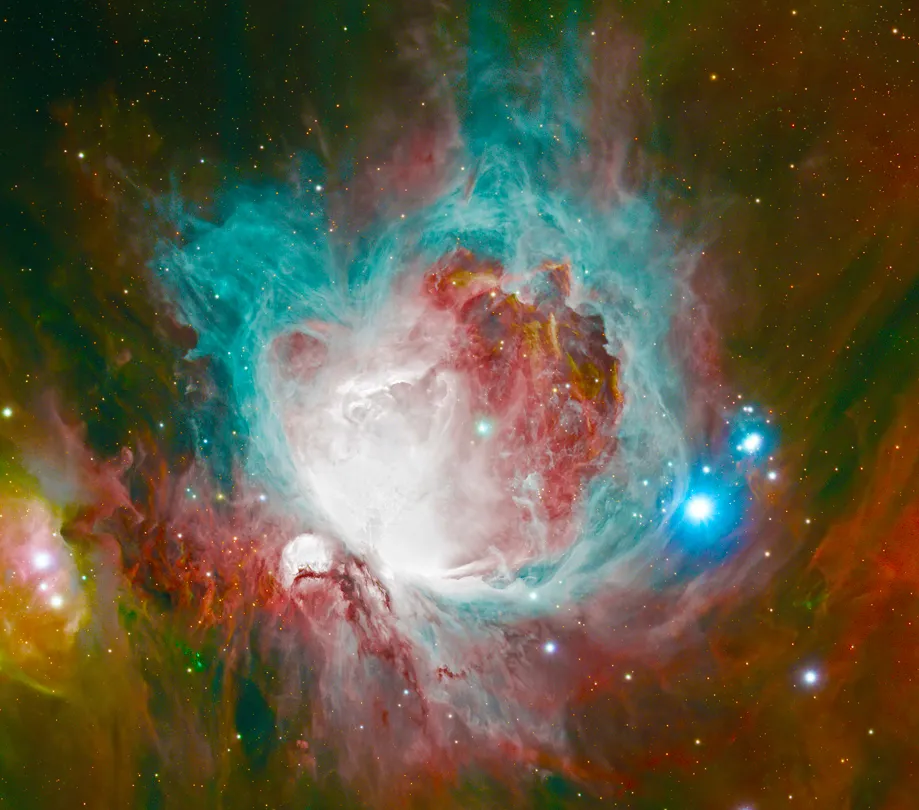
The photo above illustrates an example of poor processing using the same data - a heavily oversaturated version of my original Orion image. While its neon-like colors may appear striking, they are far from realistic. In space, such vibrant neon hues simply don’t exist. Unfortunately, this level of oversaturation is quite common online when showcasing the Orion Nebula. While it’s not necessarily "bad," it’s important to recognize that it doesn’t accurately represent the nebula's true colors or structure.
Merry Christmas everyone!
The birth of Jesus is central to my Christian faith because it represents God's ultimate act of love and redemption for humanity. For us believers, this event is not just a historical claim but a spiritual cornerstone: the arrival of Jesus as the promised Messiah fulfills ancient prophecies and reveals God's plan to save humanity from sin. His birth, life, death, and resurrection offer the gift of salvation and the hope of everlasting life, a promise that transcends material wealth and worldly concerns.
Christmas, at its core, is a celebration of this profound gift—the birth of Jesus Christ. While modern culture often emphasizes materialism during the holiday season, the true essence of Christmas lies in remembering and embracing the sacrificial love of God. The gift of a Savior is not something that can be bought or sold; it is freely given, offering forgiveness, peace, and eternal life to all who accept it. By focusing on the spiritual meaning of Christmas, we are reminded that its joy comes not from what we receive, but from the immeasurable love and grace of God through Jesus Christ.
About the Author
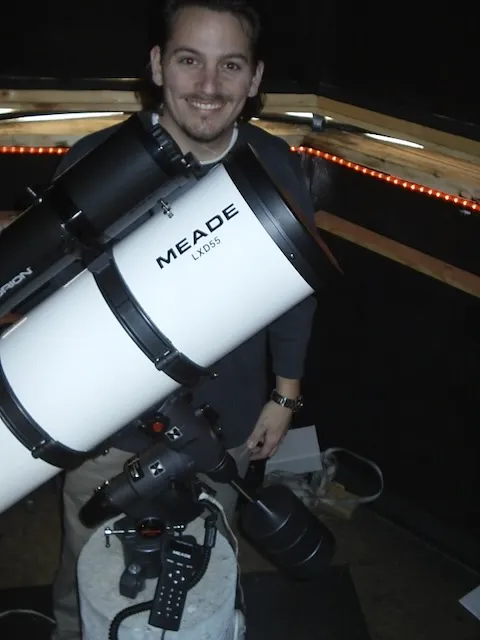
Meet Richard Harris, a passionate and dedicated astronomer who embarked on a cosmic journey at the age of 11 and has been reaching for the stars ever since. Born with an innate curiosity for the universe. Richard's fascination with astronomy ignited when he first gazed up at the night sky and felt an indescribable connection to the cosmos and creation. As a younger lad, Richard spent countless hours poring over astronomy books, studying constellations, and learning about the celestial wonders that grace our skies. In 2001, Richard invented the HyperTune telescope process, which has grown into the standard for German equatorial telescope mount tuning across the globe. He is also the founder of ScopeTrader, a global resource helping to grow the hobby of astronomy which started in 2002, and the CEO of Moonbeam software company, started in 2008. When he's not taking photos of our universe, you can find him with family, playing guitar, or traveling.
